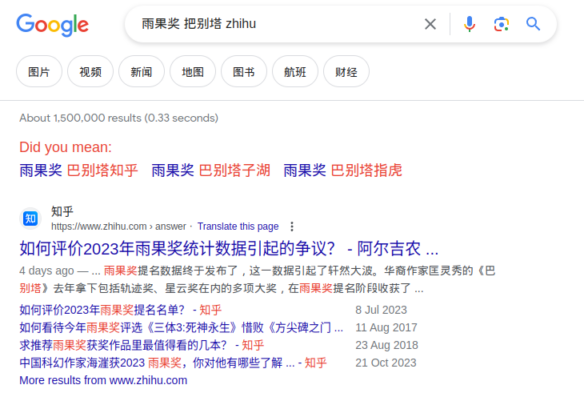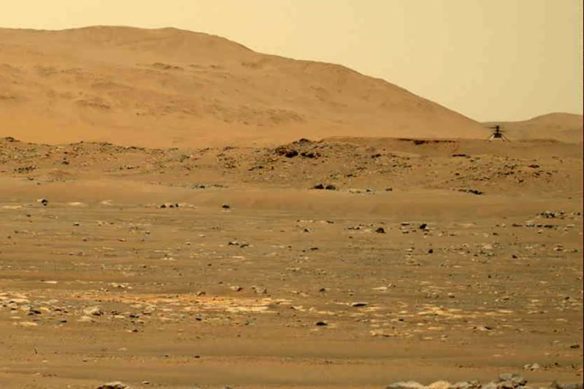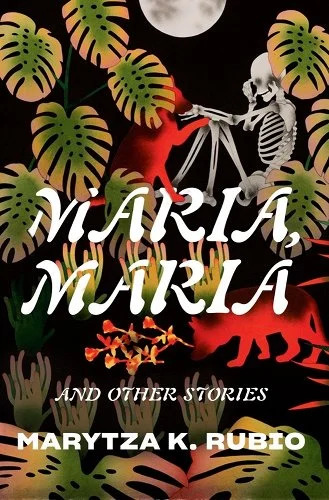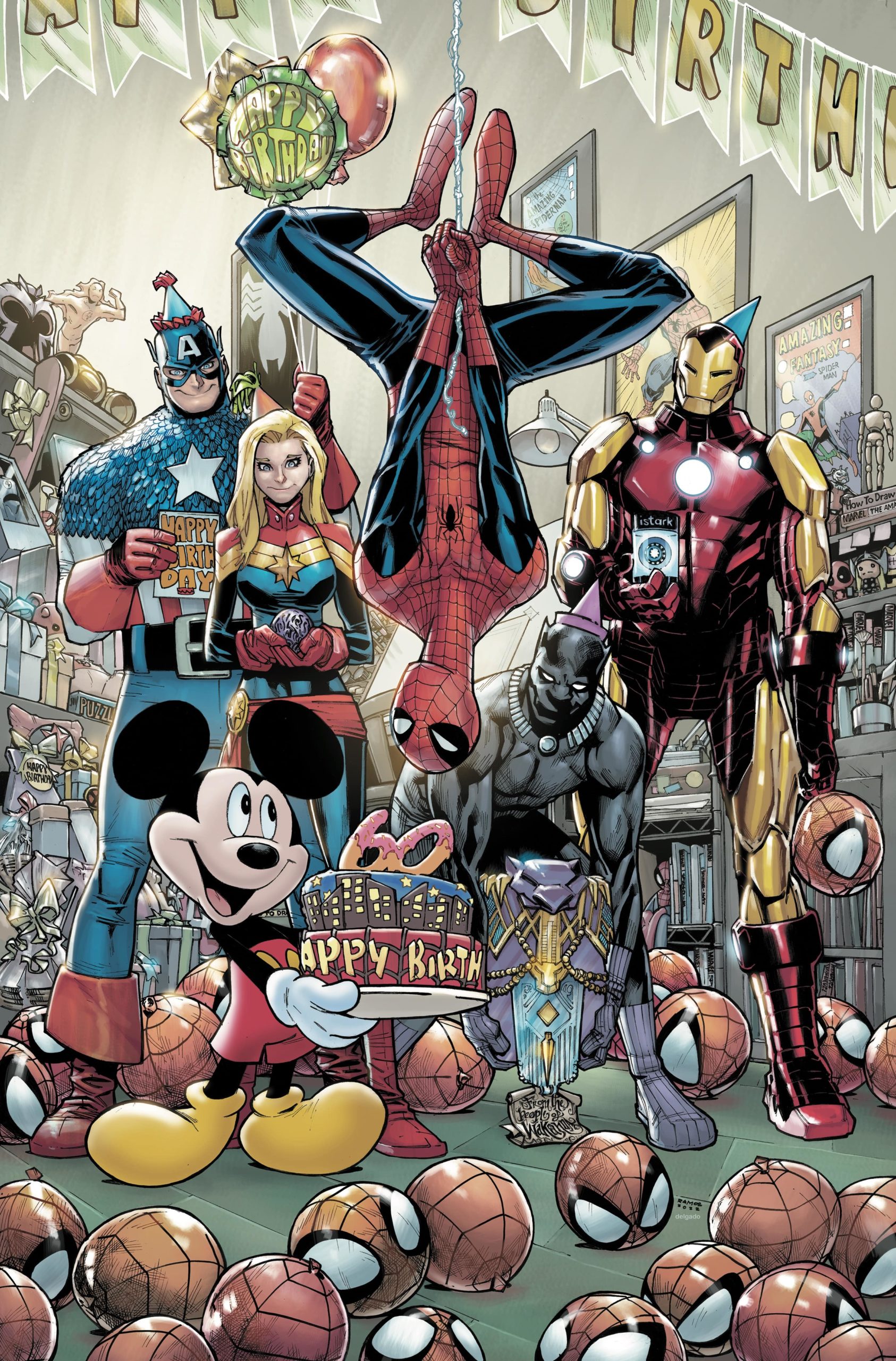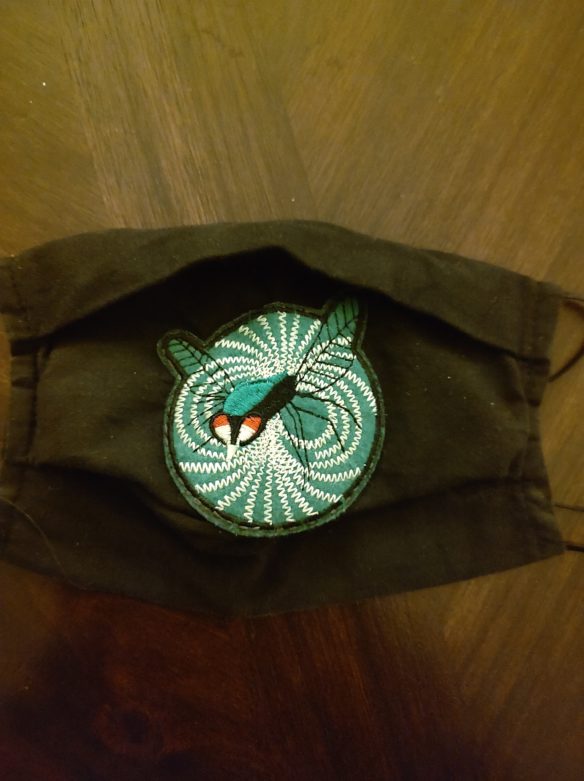
(1) ELLEN KLAGES ON JEOPARDY! [Item by Steven H Silver and David Goldfarb.] One of the contestants on Wednesday’s episode was World Fantasy Award-winning, Hugo- and Nebula-shortlisted author Ellen Klages. Ellen came in third. She was against a couple of guys who had strong buzzer abilities. The game recap can be found on J! Archive. At the break, she began the story of the scary ham story that she told at the Nebula Award Ceremony in San Jose in 2014.
David Goldfarb took notes on the episode’s sff references.
In the Double Jeopardy round, there was some SFF content in the clues.
Books From the Last Few Years, $1200: There are an infinite number of books in “The Midnight” this, a 2020 bestseller by Matt Haig
Amar Kakirde knew it was a library.
Books From the Last Few Years, $1600: This 2021 Andy Weir book about a plucky astronaut sounds like it may be a long shot
A triple stumper. (This was “Project Hail Mary”.)
Books From the Last Few Years, $800: Author Curtis Sittenfeld wonders what would’ve happened in Hillary never married Bill in the novel titled with this maiden name.
Returning champion Chris D’Amico knew Hillary’s maiden name: “What is ‘Rodham’?”
Not SF but amusing to note:
Already in the Form of a Question, $1600. A Daily Double, with $6000 on the line: In a relatively famous play, this 4-word question precedes “Deny thy father & refuse thy name”
Chris didn’t know it: he tried, “What is, ‘How now, brown cow?’”
(It was actually “Wherefore art thou Romeo?”)
(2) DANGER IN THE REAR VIEW MIRROR. At A Deep Look by Dave Hook the author is “Revisiting ‘Dangerous Visions’”. He still finds 19 of the 33 stories in the volume are “great” or “superlative”.
… With all of the circus and controversy over whether Dangerous Visions was ever as good or as important as its reputation, or whether it was overrated, or whether the Suck Fairy had visited, I approached the reread with interest, hope and no small amount of trepidation….
… I am very glad I reread Dangerous Visions, although my reactions are mixed….
Hook shares ratings and comments about the 19 stories he feels are still remarkable.
It’s worth remembering that four stories in the anthology became finalists for the Hugo and/or Nebula, and of those, three won at least one of the awards:
- “Riders of the Purple Wage” by Philip José Farmer (tied for Hugo Award Best Novella, and a Nebula finalist)
- “Gonna Roll the Bones” by Fritz Leiber (won the Hugo and Nebula Award for Novelette)
- “Aye, and Gomorrah…” by Samuel R. Delany (Hugo Best Short Story finalist, and Nebula Award Short Story winner)
- “The Jigsaw Man” by Larry Niven (Hugo Best Short Story finalist)
- “If All Men Were Brothers, Would You Let One Marry Your Sister?” by Theodore Sturgeon (Nebula Award Novella finalist)
However, Hook points out a definite shortcoming in the anthology:
…I also observe that only three out of 33 stories (9%) were by women. I don’t know how this came to be, but it is unfortunate. It may be that Ellison heard criticism on this point for Dangerous Visions. Looking at Ellison’s 1972 anthology Again, Dangerous Visions, there is a modest improvement, with nine out of 55 stories (16%) that feature women writers….
(3) WEN-YI LEE Q&A. With “Asian Heritage in Horror Month: An Interview with Wen-yi Lee” the Horror Writers Association blog continues its thematic series.

What draws you to the horror genre?
Well, I kind of like twisted things, as a baseline. As a writer, I like that horror as a genre lets you take an abstract fear and make it tangible, and confront and take apart all its angles. I also like the big, raw feelings; I like the transportive strangeness and the sense of confrontation and catharsis. Horror and romance are Barbenheimer genre sisters, really; they’re both rooted in these big vulnerable core feelings. I love romance in my horror, or horror in my romance.
Do you include Asian and/or Pacific Islander characters and themes in your writing with purpose, and if so, what do you want to portray?
I do! The protagonist in my debut novel is Chinese American, but more often than not I write from my being Southeast Asian Chinese–specifically Singaporean–which is very different from the Asian American identity but shares enough here and there that I do resonate with Asian American work. In The Dark We Know there are elements of being unrooted compared to the white families in town that can trace their lines back generations on the land, and familial language barriers and cultural isolation are factors in the main character’s loneliness. Other times, I’m not trying to write something “cultural” and “meaningful”, but just tell a good story that happens to be rooted in a particular ethnic/cultural environment, with characters that look and sound familiar instead of the blonde/blue-eyed girls that my main characters used to be. I’m still working on putting out a true love letter to Southeast Asia’s shared iconic female ghosts…
(4) MESS CALL AT REDWALL. James Folta confesses to Literary Hub readers, “I think about the food in the Redwall books way too often.”
…Before we go any further with Redwall, an important clarification: the characters are animal-sized and their world is scaled down. Some poor, misguided folks will tell you that these books are filled with human-sized animals, but the issue has been settled by scientific polling. We’re talking about a world of whimsy here, not a freak show where some rodents fell into the Toxic Avenger ooze. And yes, I know Jacques said in a Q&A that, “the creatures in my stories are as big or small as your imagination wants them to be.” We can all agree that this is a polite smokescreen for younger readers. But we’re all adults here—the characters are small.
What seems to be most enduring about Jacques’ books for me and other readers, though, are his descriptions of food and drink. If you’ve read the books, you know what I’m talking about—no one ever just eats food in Redwall. The descriptions of food unfurl in long lists, cataloged here in impressive detail. The mice food has inspired memes, a Twitter bot, a drinking game, and a cookbook.
Jacques is sumptuous, even gratuitous in his descriptions of food and drink. In the first book, Jacques writes of “tender freshwater shrimp garnished with cream and rose leaves, devilled barley pearls in acorn puree, apple and carrot chews, marinated cabbage stalks steeped in creamed white turnip with nutmeg.” The Bellmaker has dishes of “turnovers, trifles, breads, fondants, salads, pasties, and cheeses alternated with beakers of greensap milk, mint tea, rosehip cup and elderberry wine.” Even a simple breakfast at the cave of a mouse named Bobbo in Mariel of Redwall is lavished with description: “Now, you will find a small rockpool outside to wash in, and I will prepare wild oatcakes, small fish, and gorseflower honey to break your fast.”…
(5) BEETLEJUICE BEETLEJUICE TRAILER. The official trailer for the Beetlejuice sequel dropped today.
Beetlejuice is back! After an unexpected family tragedy, three generations of the Deetz family return home to Winter River. Still haunted by Beetlejuice, Lydia’s life is turned upside down when her rebellious teenage daughter, Astrid, discovers the mysterious model of the town in the attic and the portal to the Afterlife is accidentally opened. With trouble brewing in both realms, it’s only a matter of time until someone says Beetlejuice’s name three times and the mischievous demon returns to unleash his very own brand of mayhem.
(6) CASTLE Q&A. The Chicago Tribune reports on the previously announced career honor: “Crete resident Mort Castle to get horror writers award”.
Mort Castle remembers being frightened when his third-grade teacher played Edgar Allan Poe’s short stories “The Tell-Tale Heart” and “The Pit and the Pendulum” on a phonograph.
“I was one of the weird kids who liked being scared. I dug nightmares,” said Castle of Crete.
The Horror Writers Association will present him with a Lifetime Achievement Award on June 1 during the Bram Stoker Awards ceremony at StokerCon 2024 in San Diego.
The award honors individuals whose work has influenced the horror genre substantially….
(7) FAMILY TIES. Rich Horton is working his way through the 2024 finalists: “Hugo Nominee Review: The Saint of Bright Doors, by Vajra Chandrasekera” at Strange at Ecbatan.
… The story is told primarily from the point of view of Fetter. Fetter’s mother tore his shadow from him at birth, and as a consequence, besides not casting a shadow, he is not tightly rooted to the ground: he will float into the air if he doesn’t take care. His mother also teaches him to be an assassin, from an early age, and she prepares him to commit the Five Unforgivables, as defined by his absent father’s theology — for his father is a “saint”, the Perfect and Kind. These crimes are matricide, heresy, killing of saints, patricide, and killing the Perfect and Kind. Nice family!…
(8) WHAT’S THAT RINGING? The New York Times has done an in-depth article about a controversy recently mentioned in the Scroll: “’The Hunt for Gollum’ Is Announced, Then ‘Lord of the Rings’ Fan Film Disappears”. (The link is not paywalled.)
… In 2009, Chris Bouchard, a recent film school graduate, uploaded his 39-minute “Lord of the Rings” fan film, “The Hunt for Gollum,” to YouTube. At the time, the platform was still, in his words, full of “five-minute videos of people’s cats.”
The site promoted Bouchard’s movie on its homepage, and within 24 hours, he had more than one million views. Today more than 13 million have watched the film, cementing it as a fan favorite.
So it came as a surprise recently when Bouchard received a text from an old friend saying that Warner Bros. had announced a planned addition to its growing “Lord of the Rings” franchise. The name of the movie? “The Hunt for Gollum.”…
… After getting the text, “at first I thought he was pulling my leg,” Bouchard said of his friend. Soon, online articles were embedding the fan film in their coverage of the Warner Bros. announcement, leading younger fans to it for the first time while older ones relived its lo-fi magic.
But by the next morning, Bouchard’s 15-year-old work had disappeared from YouTube. Viewers clicking on the link were shown a message stating, “This video contains content from Warner Bros. Entertainment, who has blocked it on copyright grounds.”…
… But YouTube denied the appeal. So, like eagles over Mordor, the Ringers, as the fans are known, swooped in. They wrote articles and posted heated comments on Reddit and other sites, calling the removal “deplorable” and “despicable.” Bouchard noted his disappointment on X.
Bouchard quickly received a follow-up email from YouTube: The movie had been reinstated. In an email, Warner Bros. said it had no official comment. YouTube did not reply to requests for comment….
(9) H. BRUCE FRANKLIN (1934-2024). Black Gate reports that scholar H. Bruce Franklin died May 19 at the age of 90. He was the emeritus John Cotton Dana endowed Professor of English and American Studies at Rutgers University-Newark and author of numerous books, essays, and exhibitions related to science fiction.
During the 1960s, Dr. Franklin was fired from Stanford despite being tenured supposedly for inciting student anti-Vietnam war protests. A former Air Force navigator and intelligence office in the Strategic Air Command, he also resigned his commission in protest of that war.
He won the Science Fiction Research Association’s Pioneer Award for his article “The Vietnam War as American SF and Fantasy” (Science Fiction Studies Nov 1990). He also received SFRA’s Pilgrim Award, an Eaton Award, and was named a Distinguished Scholar for the International Association for Fantastic in the Arts.
(10) TODAY’S BIRTHDAY.
[Written by Paul Weimer.]
May 23, 1921 — James Blish. (Died 1975.)
By Paul Weimer. For me, my reading of James Blish revolves around two axes.
The first is Star Trek. I’ve not read a ton of Star Trek novels and stories. I don’t consider myself that well read in them, even as I remember at one point it seemed the SFF section of Borders and B Dalton were half Star Trek novels and the like. But when you, reader, having watched lots of repeats of the original series are confronted with a book with the title Spock Must Die, reading it becomes a moral imperative. It’s a clever book, even if I don’t like the (now distinctly non-canonical) fate of the Klingon Commander, Koloth. I’ve also read a couple of his adaptations of episodes that he turned into short stories, which is a pretty unique way to go about things. Has anyone else done that, turning tv episodes of a series into short stories?

But what I remember Blish for the most is Cities in Flight. I came across this one by accident. Somewhere along the line, I had read Oswald Spengler, whose racial theories are pants, but I was fascinated for a long while (and still am) with his attempts to systemize history into cycles. One really can’t, and he does a lot of plates spinning to make his formulations work. (and yet, seeing that he sees the West in a period headed toward “Caesarism” and the rise of fascism in Europe and America, I still wonder). But somewhere along the line, I came across a reference that Blish had used a Spenglerian type of history for his Cities in Flight in sequence.
And so I had to go read it. The idea is bonkers, outfitting whole cities to go out into space is an idea that simply should not work. (And yet, it’s an idea which has come time and again ever since). But the idea of the Okies culture rising, changing, growing as the cities of Earth explore the galaxy and try to make a living is a compelling one. Characters? Plots? I really don’t remember either for the novel sequence. But the basic ideas (including a devastating nuclear weapon type), especially the spindizzy drive itself, stuck with me. And of course, the fact that the head of the migrating cities is the city of New York, of course, warmed and warms my ex-pat New Yorker’s heart. And a novel sequence that concludes with the end (or is it the beginning of a new one?) universe is as big a stakes as you can possibly ever get.
I’ve also read A Case of Conscience, which I feel is a prelude or an overture to the work of Mary Doria Russell, and maybe in another vein, Walter M Miller Jr.
(11) COMICS SECTION.
- With Wallace the Brave it’s easy to detect cheaters.
- Carpe Diem introduces the first mass weapon of destruction.
- Rhymes with Orange illustrates extra sensitivity.
(12) EYE-OPENING GAMES. In Nature, Sam Illingworth discusses “Why role-playing games can spur climate action”.
… Imagine you are the mayor of a coastal city. How high would you build a sea wall, for example, to offer protection from future flooding? The decision involves balancing the risks of breaches against the cost of construction, without knowing how fast seas might rise or what the wider consequences of building it might be.
It is hard to anticipate the complexity of the decisions that we will all face as the world warms. But, as a game designer and education researcher, I know that games — and, in particular, role-playing games — can be an invaluable tool for helping us think through scenarios. By getting players to deal with situations in a simulated environment, games can help us to explore options in a risk-free way.
For example, I’ve used the board game Terraforming Mars to introduce young adults to the ethics of space colonization. Players control corporations competing to transform Mars into a habitable planet by extracting resources, building cities and creating green spaces. Nearly every session evolves into a heated debate about diverting resources to make a new ‘Earth’ instead of fixing the one we have….
(13) STRANGER WILL STAY ON STAGE. “‘Stranger Things: The First Shadow’ Trailer Teases Horrific Rise of Henry Creel as West End Play Extends Into 2025” – Variety tells where to find the trailer and the stage show.
“Stranger Things: The First Shadow,” the stage play based on Netflix‘s hit sci-fi drama of the same name, will extend its run on London’s West End into 2025. Previously, shows were only scheduled through Dec. 14, but tickets are now available through Feb. 16.
The news comes as Netflix debuts an official trailer for “The First Shadow,” which serves as a “Stranger Things” prequel. Set in 1959 Hawkins, Ind., “The First Shadow” tells the origin story of Henry Creel, a new kid in town who later goes on to become Vecna, the villain introduced in “Stranger Things” Season 4….
(14) KEEPING TIME. Here’s another reverential look at “John Williams and the Music of ‘Star Wars’” at Take Note.
…John Williams’s neoclassical approach combines elements of classic Hollywood composers (Max Steiner’s leitmotifs and physical action, Alfred Newman’s lush string writing, Erich Wolfgang Korngold’s heroic fanfares, and Bernard Herrmann’s suspenseful ostinati) as well as Americana concert composers (such as Aaron Copland and Howard Hanson), and even some of the jazzy piano-based scores of Henry Mancini.
He is a product of his time, and he found the right collaborator in Steven Spielberg; the two represent one of the most productive director/composer relationships in history….
(15) ON THE LOOSE. [Item by Mark Roth-Whitworth.] Be on the watch for Mongo (or maybe, if we’re lucky, the planet Porno…) “Euclid telescope spies rogue planets floating free in Milky Way” in the Guardian.
Astronomers have spotted dozens of rogue planets floating free from their stars after turning the Euclid space telescope to look at a distant region of the Milky Way.
The wandering worlds were seen deep inside the Orion nebula, a giant cloud of dust and gas 1,500 light years away, and described in the first scientific results announced by Euclid mission researchers.
The European Space Agency (Esa) launched the €1bn (£851m) observatory last summer on a six-year mission to create a 3D map of the cosmos. Armed with its images, scientists hope to understand more about the mysterious 95% of the universe that is unexplained….
(16) MOMENT IN THE SUN. [Item by SF Concatenation’s Jonathan Cowie.] Today’s Nature cover is quite nifty. Link to cover and contents here.

The Sun undergoes an 11-year cycle that results in a variation of its magnetic field, readily seen in the creation and movement of sunspots. Conventional models assert that the origins of this solar dynamo lie deep within the star, but in this week’s issue, Geoffrey Vasil and colleagues present a model that suggests the opposite is true. The researchers identify that instabilities very close to the Sun’s surface provide a better explanation of the various features of the solar dynamo. The cover is a composite of some 150 images of the Sun taken by NASA’s Solar Dynamics Observatory between 2010 and 2020, capturing variations in the Sun’s magnetic field over nearly a full sunspot cycle.
There is an “Instability could explain the Sun’s curious cycle” short review item on this here (paywalled).
The primary research paper is at the link.
(17) URANUS PROBE. And in this edition there is a comment piece…. “Why the European Space Agency should join the US mission to Uranus”
Without international partnerships, NASA’s ground-breaking mission could fail to be ready in time for its optimal launch window.
This week, space and planetary scientists are meeting at the Goddard Space Flight Centre in Greenbelt, Maryland, to scope out a new flagship NASA mission — the Uranus Orbiter and Probe. Still on the drawing board, the project would entail sending a spacecraft to orbit Uranus and drop a probe into the planet’s atmosphere. The spacecraft, which could be built and launched within a decade, would investigate the nature of Uranus, including its unusual tilt and magnetic field. It would also search the planet’s moons for signs of hidden oceans and other potentially habitable environments.
Such a mission would be ground-breaking — the first to orbit an ‘ice giant’ planet. Thought to be made mostly of ices, or perhaps dominated by rocks, ice giants Uranus and Neptune have more exotic chemistry than do Jupiter and Saturn, which as ‘gas giants’ consist mainly of hydrogen and helium gas1,2. Ice giants are also the most common type of exoplanet in the Milky Way3. With characteristics that lie between those of gas giants and of Earth and other terrestrial planets, it’s crucial to learn how such systems formed and evolved.
That’s why the Uranus Orbiter and Probe was given priority status in the 2022 US Planetary Science and Astrobiology Decadal Survey. And NASA is set to lead it. At the Goddard workshop, scientists will scope out the mission and consider its design, technologies and costs.
The mission has been under discussion for some time, and it will be exciting to see it begin to take shape. But, to make sure it is successful and happens as quickly and cost-effectively as possible, we would like to see others involved in its design, too. As a first step, we call for the European Space Agency (ESA) to join the project by, for example, building the entry probe — a possibility that was foreseen in the decadal report and has been assessed by ESA but has not yet been agreed.

[Thanks to Kathy Sullivan, Mike Kennedy, Steven H Silver, Mark Roth-Whitworth, Andrew Porter, John King Tarpinian, Chris Barkley, Cat Eldridge, SF Concatenation’s Jonathan Cowie, Steven French, and Teddy Harvia for some of these stories. Title credit belongs to File 770 contributing editor of the day Cat Eldridge.]









